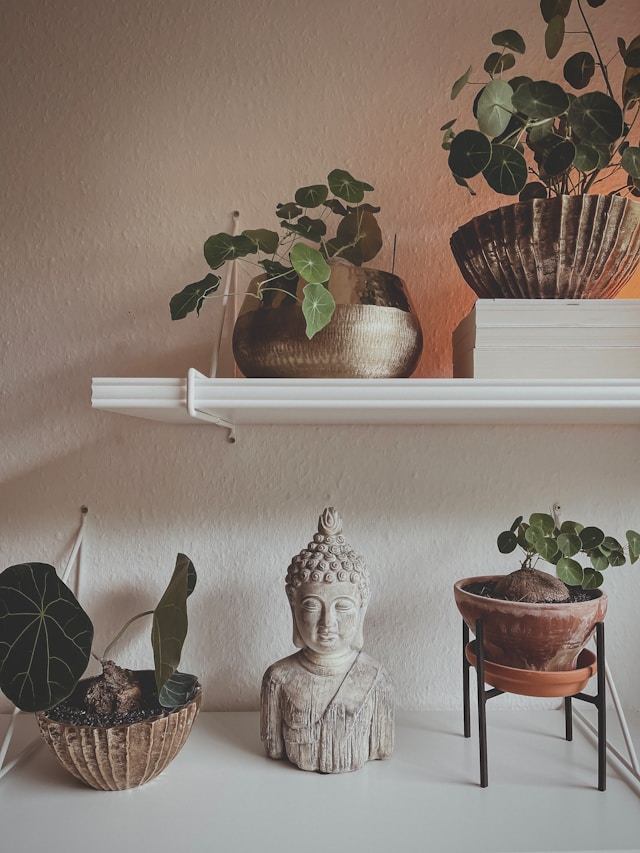 Foto von Laura Cleffmann auf Unsplash
Foto von Laura Cleffmann auf Unsplash
When you enter your home or garden, the atmosphere that prevails there is invaluable. One element that can be particularly effective in creating a serene, peaceful atmosphere is a Buddha statue. Ranging from simple and understated to elaborate and large, these sculptures are not only aesthetically pleasing to look at but also carry deep symbolic meaning.
Historical and cultural significance
Buddha statues represent the historical figure Siddhartha Gautama, better known as the Buddha, whose teachings formed the basis of Buddhism. Born in the 5th century BC, his quest for enlightenment inspired millions of people to follow a path of peace, meditation and harmony with nature. Every Buddha statue, from the smiling faces to the peacefully closed eyes, is meant to radiate the calmness and serenity one can achieve through the practices of meditation, for example.
The variety of styles
Buddha statues come in numerous styles influenced by different cultures in Asia, including those of India, Thailand, Japan and China. Depending on the region, the statue’s postures, hand gestures and expressions may vary. For instance, Thai Buddha statues often depict a standing Buddha with a gesture of reassurance, while Chinese Buddha statues often depict the Buddha with a smile symbolising prosperity and happiness.
Symbolism of mudras
An intriguing aspect of Buddha statues are the mudras. These hand gestures have specific meanings and are an essential part of the statue’s symbolism. The ‚Abhaya Mudra‘: the gesture of reassurance and protection. This gesture is often seen on statues intended for public places, as a sign of peace and security. The ‚Dhyana Mudra‘: the gesture of meditation and concentration. This gesture is usually found in statues meant for meditative spaces.
The spiritual and decorative use
While some people choose Buddha statues for their spiritual significance, others simply enjoy the aesthetic value these statues add to their surroundings. Regardless of the motivation, a Buddha statue can be a focal point in your home or garden that exudes tranquillity. It is important to remember that placing a Buddha statue should be done with respect and care, with the front usually facing east, the direction of the rising sun and of Buddha’s enlightenment.
Integration into your space
Whether you have a small flat or a sprawling garden, there is always a way to stylishly integrate a Buddha statue. Small statues can serve as a subtle reminder of balance and tranquillity on a desk or bookshelf, while larger and more striking statues look beautiful in a garden.
Purchase
If you are considering purchasing a Buddha statue, it is important to choose a piece that has been crafted with care and respect. It is advisable to look for suppliers known for their quality and authenticity. A Buddha statue can last a lifetime and even be passed down from generation to generation, so it is worth choosing one that really appeals to you.

